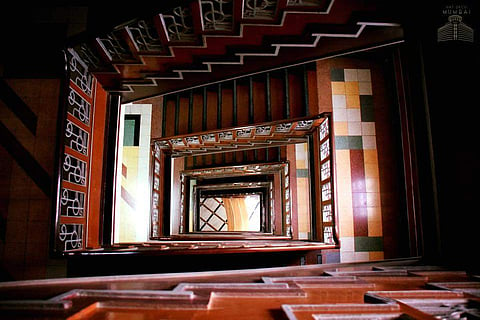

The geometric patterns, the ziggurats (ancient, stepped towers), the rounded balconies and the obsession with symmetrical grills of the Art Deco architectural style, much like New York’s Chrysler Building and Empire State Building, will transport you to a different era.
To ensure the preservation of this style and to educate the younger generation, Atul Kumar, a Finance professional, has been organising heritage walks around Mumbai and creating awareness through Twitter, Instagram and Facebook. Started by Kumar, Art Deco Mumbai, a not-for-profit organisation, has been posting pictures online of architectural designs in South Mumbai, highlighting their Art Deco-style features. It aims at putting Mumbai on the Art Deco map using social media.
“We acknowledge that we must present our information in a digital format so that it will be more accessible, widely accepted and relevant to future generations. Hence, we decided to first start off as an anonymous Instagram page to essentially just showcase the Art Deco-style structures in Mumbai in a visually engaging manner,” he says.
Unknown to most, Mumbai hosts the second largest collection of Art Deco-style buildings in the world (second to Miami, Florida), and has been successfully nominated as a UNESCO World Heritage site. It has the diversity and complexity of Art Deco-style architecture which finds no mention or recognition in either the national or international Art Deco scene.
It was this ignorance that did not sit well with Kumar. “Our photo documentation creates a sense of community and a common identity across people living in the same neighbourhood. They take pride in the shared built heritage. It also has an emotional connect because it is so widely prevalent in many neighbourhoods across the city, yet it has never been showcased,” says Kumar.
The Art Deco Mumbai website is part of Kumar’s digital outreach and his compelling need to create a comprehensive public domain repository of information capturing Mumbai’s iconic Deco architecture. It has sections on research, history, conservation, and inventory, and also an online map that shows you Mumbai’s Deco geography by neighbourhood, along with its features and elements. When asked how one can identify an Art Deco-style structure, Kumar explains, “The architectural style is identified by its clean, geometric symmetry that originated in Europe and the US in the late 1920s, and Mumbai’s architects took to it with abandon. Recognisable symbols and design styles include tropical imagery, nautical designs, Art Deco-style fonts, ziggurats and zigzags (due to height restriction on architects, this style gave an illusion of skyscrapers), references to Indian mythology and tradition, streamlining (drawn-out forms and arched contours inspired by the aerodynamics of trains and airplanes) and so on.”
With the hope of increasing public awareness about the rich and unique architectural heritage of the city, Kumar’s website intends to create a platform that captures this architectural style. “We are a small team that is very focused on what we have set out to do. We showcase Mumbai’s Art Deco-style architecture, advocate its conservation and chronicle its history. We bring a high level of integrity and commitment to quality in this initiative. We have created a repository of information that will give people an appreciation for the style, and for researchers, academicians, historians and others we offer a platform that captures Mumbai’s architecture,” he says.
